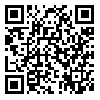BibTeX | RIS | EndNote | Medlars | ProCite | Reference Manager | RefWorks
Send citation to:
URL: http://jdisabilstud.org/article-1-2492-en.html
2- Associate Professor, Department of Psychology and Education of Exceptional Children, Faculty of Psychology and Educational Sciences, Tehran University, Tehran, Iran
3- Assistant Professor, Department of Psychology and Education of Exceptional Children, Faculty of Literature, Humanities and Social Sciences, Science and Research, Branch, Islamic Azad University, Tehran, Iran
Abstract
Background & Objectives: Sleep problems among children with autism spectrum disorders (ASD) are more common than among children with other kinds of developmental disorders as well as normal children. There is a high rate of bedtime resistance, daytime insomnia, sleepiness, nocturnal insomnia, and delayed sleep phase disorder among these children, and these problems seem to remain throughout their lifetime. Long–term sleep problems can affect the body, behavior, and cognitive function of children. One of the newest methods to reduce sleep problems is hydrotherapy. The utilization of water at different temperatures can have different effects on various body systems. This method is based on the principles of floating, hydrostatic pressure, turbulence, and flow that provides sensory stimuli through water temperature, improvement of blood circulation, and muscle relaxation. The present study aimed to determine the effect of hydrotherapy based on the Halliwick program on sleep problems in boys with ASD who were hospitalized in the boarding ward.
Methods: Thisresearch was quasi–experimental with a pretest–posttest and follow–up design with a control group. The statistical population of this research comprised all the children with ASD living in Karaj City, Iran. The sample size was determined with the G*Power software. Among the boys hospitalized in the boarding ward of the Kahrizak Alborz sanatorium, 24 were selected by convenience and purposive sampling method, with regard to inclusion criteria, which were diagnosis of ASD by a psychiatrist and psychologist, the age range of 4–11 years, and ability to understand oral instructions. The exclusion criterion was the absence of more than one meeting. Research tools included Children's Sleep Habits Questionnaire (Owens et al., 2000) and Gilliam Autism Rating Scale–Second Edition (GARS–2) (Gilliam, 2006). Before the intervention, both experimental and control groups were tested. Then, the treatment sessions were performed according to the Halliwick program which included 24 sessions, 3 sessions a week. In the end, the posttest and 1 month later follow–up were performed for both groups. To analyze the data, descriptive statistics (mean, standard deviation) and inferential statistics (t test comparing the averages of two independent groups, analysis of variance with repeated measurements and LSD post hoc test) were used. Data analysis was done with SPSS version 22 software at a significance level of 0.05.
Results: Results of analysis of variance for the intragroup factor (time) (p<0.001) and the intergroup factor (group) (p<0.001) in sleep problems variable was significant. Also, the group*time effect was significant (p<0.001) with an effect size of 0.82. Hydrotherapy based on the Holliwik program had a significant effect on the reduction of sleep problems in the experimental group in the posttest phase (p=0.001) and its effects were sustained in the follow–up phase as well (p=0.375).
Conclusion: According to the findings of this research, hydrotherapy significantly reduced sleep problems in children with ASD. Thus, this method can be used as a complementary approach in rehabilitating children with ASD.
| Rights and permissions | |
 |
This work is licensed under a Creative Commons Attribution-NonCommercial 4.0 International License. |



